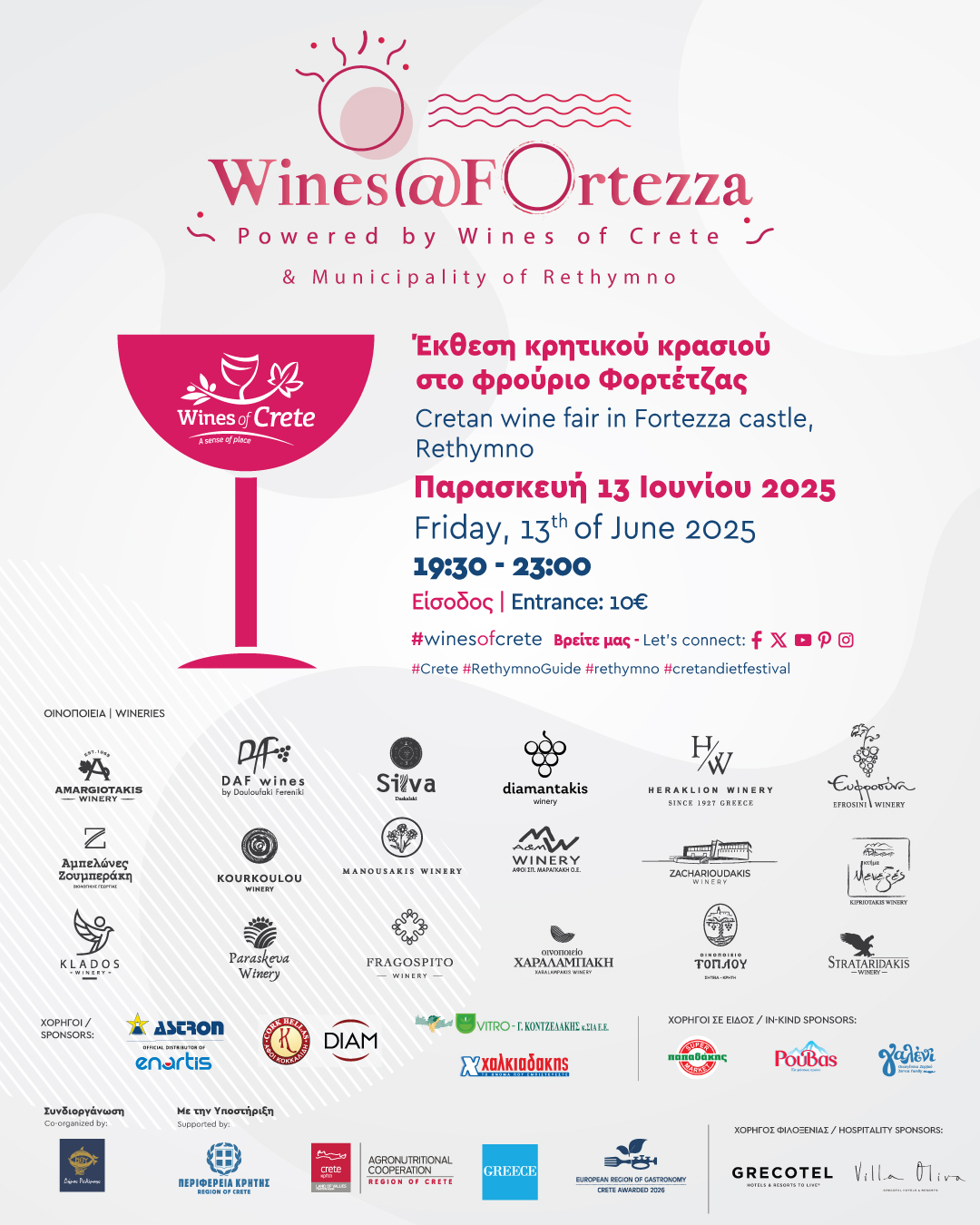Going Native: Crete Wine Varietals
There’s a place in the middle of the wine-dark sea called Crete, a lovely, fruitful land surrounded by the sea. – Homer, The Odyssey
Thrapsathiri, Vidiano, Vilana, Malvasia de Candia, Daphni, Plyto, Kostifali, Mandilari, Liatiko…..To the uninitiated these sound like another version of the nine Greek muses. But in the wine world, these lyrical names are among the native varietals of Crete.
Wine production in Crete dates back to 2000 B.B. to ancient Minoan civilization. After the Ottomans invaded Crete in 1669, wine production subsided for nearly two centuries. It was reborn in the late nineteenth century after liberation. In 1913 Crete became part of Greece. Over the next few decades of war and political turmoil in Greece and throughout Europe, Crete winemakers persevered, despite less than favorable opportunities for exportation.
The most widely planted indigenous varietal in Crete is Vilana, a white grape, and Kostifali, a low tannin red which is frequently used as a base for blending. Other local varietals include whites: Vidiano, Daphni, Plyto, Thrapsathiri, Malvazia di Candia, and Spina Muscat. Indigenous red varietals include Mandilari, Romeiko and Liatiko, which produces delightful sweet wines.
International varietals such as Sauvignon Blanc, Roussanne, Chardonnay, Syrah, Mourvedre, Cabernet Sauvignon and Merlot, are also grown in Crete
Today’s Crete wine producers are focusing on international trade. Crete wines can be found in the United States, Germany, Belgium, The Netherlands, France, Canada and China.
The Heraklion Winemakers Network (Wines of Crete), a trade organization of producers based in Crete, works to educate both trade and consumers on the contemporary appeal of these ancient varietals through workshops, trade missions, its website and a free application for both the iPhone and Android visit www.winesofcrete.gr


